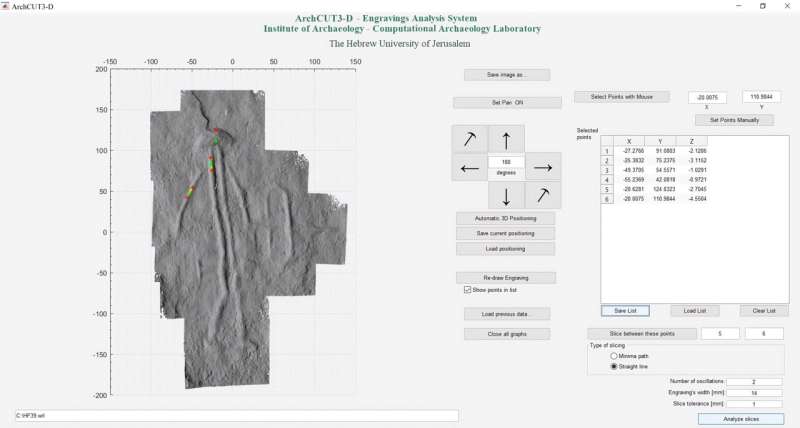A groundbreaking study conducted by a multidisciplinary team, including a computational archaeologist, artist, and computer programmer, has revealed fascinating insights into ancient rock engravings and the techniques employed by ancient engravers. The research, carried out at Site 25 in Timna Park, Southern Israel, has captivated experts and offers a fresh perspective on the production processes of these intriguing engraved rocks. The findings are published in the renowned journal, Humanities and Social Sciences Communications.
In the past, the study of engraved images mainly focused on their iconography, iconology, and stylistic features, often overlooking the intricate details of engraving techniques. However, this innovative research method, introduced in the study, emphasizes the characterization of the techniques used in creating rock engravings during ancient times. By considering technological variations as indicators of the engraver’s production process, the team aims to enhance our understanding of these ancient artworks.
To conduct the study, 3-D scans of two ancient engravings and contemporary graffiti were obtained from Site 25 in Timna Park. These scans underwent meticulous analysis using ArchCUT3-D, a specialized software developed to assess the 3-D micromorphological characteristics of the incisions forming the engravings. ArchCUT3-D enables precise and repeatable analysis by extracting 3-D slices of the incisions and examining the surface micromorphology.

The research results indicate that different incisions within the engravings were executed using distinct techniques. By identifying these distinctive characteristics, the team successfully showcased the unique aspects of the engraving operations, including ergonomic conditions and the consistency level of the engraving gestures.
The utilization of ArchCUT3-D software in this study represents a significant computational advancement in the field. It enables the recognition of incision techniques through micromorphology specifications and facilitates the reconstruction of engraving gestures and individual production procedures. This groundbreaking technology opens up exciting possibilities for understanding the craftsmanship and cultural significance behind ancient rock engravings.

Prof. Leore Grosman, Head of the Computational Archaeology Laboratory at the Hebrew University of Jerusalem, expressed enthusiasm for the study’s findings, stating, “Our research provides a fresh perspective on ancient rock engravings by delving into the intricacies of their production processes. By unlocking the technological secrets behind these engravings, we gain valuable insights into the craftsmanship, artistic expression, and cultural context of our ancestors.”
The implications of this study reach beyond the scientific community, as the newfound knowledge about ancient engraving techniques has the potential to reshape our understanding of human cultures throughout history. The team hopes that their findings will stimulate further research and inspire interdisciplinary collaborations to unravel the mysteries surrounding these ancient artworks.
The research team consisted of Prof. Leore Grosman, Head of the Computational Archaeology Laboratory, Lena Dubinsky, a doctoral candidate, and Dr. Marcelo David, all from the Hebrew University of Jerusalem.
More information:
Lena Dubinsky et al, Recognizing technique variation in rock engravings: ArchCUT3-D for micromorphological analysis, Humanities and Social Sciences Communications (2023). DOI: 10.1057/s41599-023-01742-7
Citation:
Ancient rock engravings unveil intriguing insights into human cultures (2023, July 4)
retrieved 4 July 2023
from https://phys.org/news/2023-07-ancient-engravings-unveil-intriguing-insights.html
This document is subject to copyright. Apart from any fair dealing for the purpose of private study or research, no
part may be reproduced without the written permission. The content is provided for information
Denial of responsibility! SamacharCentrl is an automatic aggregator of Global media. In each content, the hyperlink to the primary source is specified. All trademarks belong to their rightful owners, and all materials to their authors. For any complaint, please reach us at – [email protected]. We will take necessary action within 24 hours.

Shambhu Kumar is a science communicator, making complex scientific topics accessible to all. His articles explore breakthroughs in various scientific disciplines, from space exploration to cutting-edge research.
Denial of responsibility! Samachar Central is an automatic aggregator of Global media. In each content, the hyperlink to the primary source is specified. All trademarks belong to their rightful owners, and all materials to their authors. For any complaint, please reach us at – [email protected]. We will take necessary action within 24 hours.


